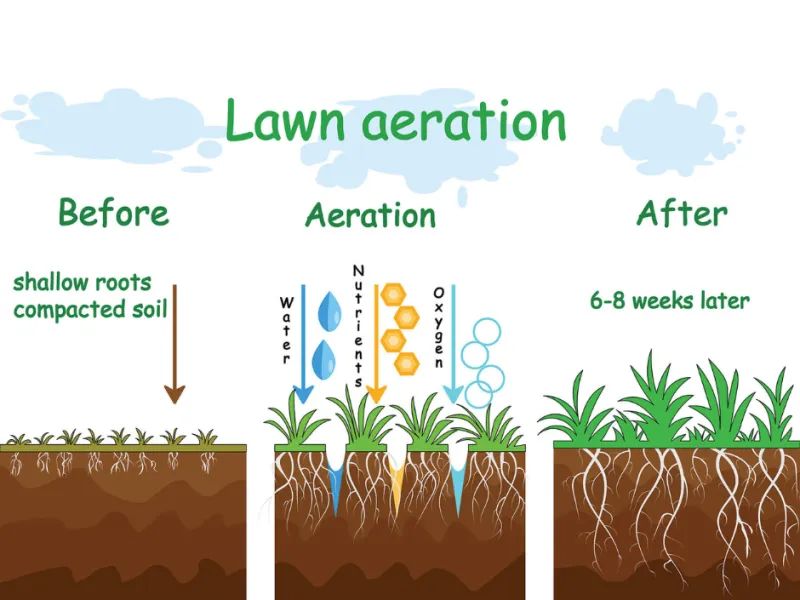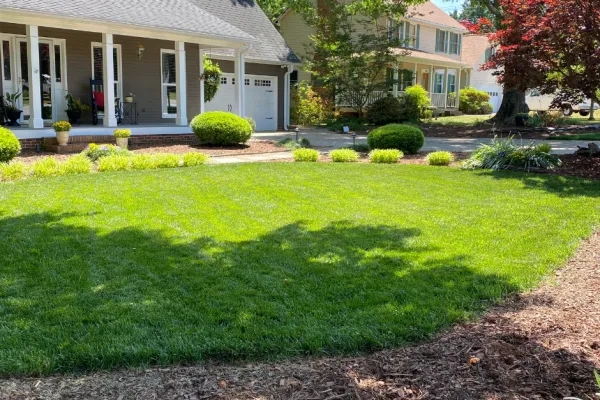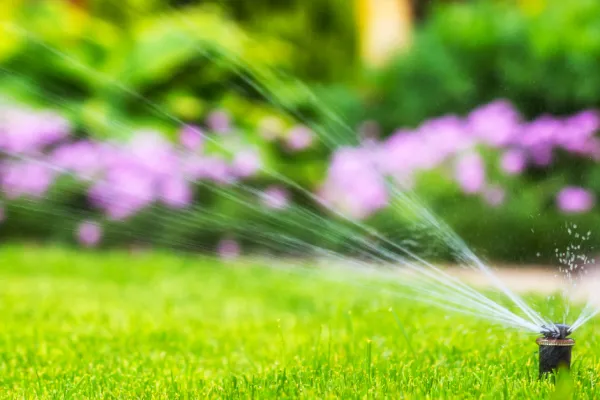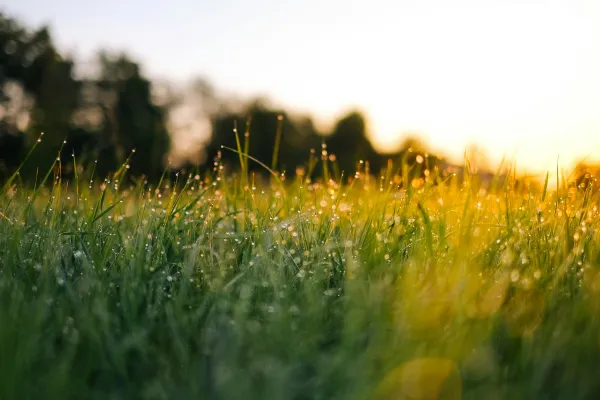Why Aeration & Overseeding Is Important

Why Aeration & Overseeding Are Essential for Fescue Lawns After Summer Stress
Tall fescue is tough—but after a DMV summer (heat, humidity, foot traffic, and the occasional brown patch), even good lawns get thin and tired. Late summer into fall is your reset button. Here's why core aeration and overseeding matter and how to do it right.
Fescue doesn't spread, so you must replace what died
1. Fescue Grows in Clumps
Fescue is a bunch-type grass, meaning each plant grows from a single seed in a tight clump. Unlike spreading grasses (such as Bermuda or Zoysia), fescue doesn't send out stolons (above-ground runners) or rhizomes (underground stems) to fill in bare spots.
2. Bare Spots Stay Bare
Since fescue can't naturally "creep" into thin or damaged areas, any part of the lawn that dies—whether from drought, heat stress, insects, or disease—will remain bare unless new seed is planted.
3. Why Overseeding Is Essential
Due to this growth habit, annual overseeding is crucial for fescue lawns. Adding fresh seed every fall helps:
Replace grass lost during summer heat or disease pressure
Thicken the turf for better weed resistance
Keep your lawn looking lush and uniform year after year
4. How It Differs From Warm-Season Grasses
Warm-season grasses (like Bermuda, Zoysia, or St. Augustine) naturally repair themselves by spreading. Fescue, on the other hand, requires homeowner or professional care to stay full and healthy.
Summer compaction chokes roots—cores open the soil
Cookouts, kids, pets, and heavy rains press soil particles together. Compacted soil holds less air and water. Core aeration pulls small plugs from the lawn, which:
Improves air, water, and nutrient flow
Gives roots space to grow deeper
Breaks up that "hardpan" feel underfoot
Core aeration creates small holes in the soil, which gives new grass seed the perfect place to settle and make strong seed-to-soil contact. When you overseed after aeration, your fescue can grow in thicker and healthier.
Why does that matter? A thick lawn naturally crowds out weeds. Thin or bare spots, on the other hand, leave open ground for winter and spring weeds to take hold. A dense fescue canopy shades the soil, blocks weed seeds from sprouting, and reduces the need for weed control later.
PestNow makes it easy by handling everything—core aeration, overseeding, and follow-up care—so your lawn bounces back quickly after summer stress. You can also pair seeding with fall nutrition and a disease or grub check to give your lawn the strongest start possible for next year.
Ready to refresh your lawn? Schedule your aeration and overseeding today to lock in the prime fall window.
Aeration and Seeding FAQs
Will aeration damage my irrigation?
Not if you flag heads first. We work around them.
Can I walk on the lawn after seeding?
Limit traffic for the first 2-3 weeks. Use boards or paths if you must cross.When will it look full?
You'll see sprouts in 7-14 days (weather-dependent). Density builds over 4 to 8 weeks.Can I aerate and seed if I used crabgrass preventer in spring?
Yes. Spring pre-emergent is mainly broken down by fall. You're fine to seed from mid-September to mid-October.
Spike aeration vs. core aeration—what's better?
Core aeration. Pulling plugs opens real channels for air/water/roots. Spikes can actually compact soil around the holes.
Do I need to rake up the plugs after aeration?
No. Leave the plugs alone. They crumble in 1-3 weeks and return nutrients to the soil.
How short should I mow before seeding?
Drop the bag to about 3 inches the day before—bag the clippings so the seed reaches the soil.
Do I need straw or blankets?
Usually, no for overseeding. On steep slopes or very bare spots, a light straw cover or erosion blanket helps keep seed in place.
Can I just seed the thin spots?
You can, but a full-lawn overseed after aeration blends color and thickness, and blocks weeds more effectively.
Is slit-seeding better than broadcast seeding?
Both work. Slit-seeding places seed into shallow grooves (great for very thin lawns). Aeration + broadcast is excellent for healthy yards that need thickening.
Should I dethatch too?
For fescue, heavy thatch is rare. Core aeration usually handles minor thatch. If there's a thick mat, start with a light rake.
Compost topdressing—worth it?
Yes. A ¼-½ inch layer of screened compost enhances seed-to-soil contact, nourishes microbes, and aids in moisture retention.
What fertilizer should I use at seeding?
A starter fertilizer (follow label) or a light, slow-release feeding. Always follow local rules on phosphorus and base lime on a soil test.
How should I water new seed?
Keep the top ½ inch moist:
Days 1-10: 2-3 light waterings/day (5-10 min).
Days 11-21: 1 light watering/day.
After first mow: switch to deep, less frequent watering.
When should I mow after seeding?
When seedlings reach 3-3.5 inches tall and the ground is firm, use a sharp blade to cut the grass.
When can I use weed control again?
Wait 2-4 weeks before and after seeding for most weed killers. Skip fall pre-emergent if you overseed (it blocks grass seed, too).


